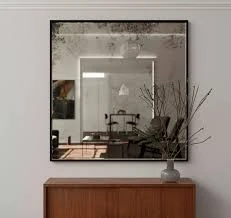

The Importance of Low-E Glass Surface Coatings
Low-emissivity (Low-E) glass surface coatings are a revolutionary advancement in the field of energy efficiency for buildings and homes. These specialized coatings are designed to reflect infrared and ultraviolet light while allowing visible light to pass through. By significantly improving thermal insulation, Low-E glass plays a crucial role in reducing energy consumption and enhancing indoor comfort.
The Importance of Low-E Glass Surface Coatings
Low-E coatings come in two main types hard coat and soft coat. Hard coat Low-E glass is produced by applying a thin layer of metallic oxide to the glass during the manufacturing process, resulting in a durable and robust surface. Soft coat Low-E, on the other hand, is created by placing multiple layers of coatings on the glass. This type of coating provides superior thermal performance and is particularly effective in residential applications where energy efficiency is paramount.

In addition to energy savings, Low-E glass also enhances the comfort of indoor environments. By managing heat gain and loss, occupants can enjoy a more consistent and pleasant temperature throughout their living or working spaces. Furthermore, the coatings help mitigate glare and fading of fabrics and artwork due to UV exposure, preserving the integrity of valuable furnishings and minimizing the need for replacements.
The environmental benefits of Low-E glass are substantial. By reducing energy consumption, these coatings contribute to lower greenhouse gas emissions, helping to combat climate change. As more builders and homeowners recognize the value of sustainable design, the demand for Low-E glass has surged. This growing popularity has driven innovations in the coatings, leading to improved performance and broader application possibilities in both residential and commercial structures.
In conclusion, Low-E glass surface coatings represent a significant leap forward in energy-efficient design. They not only improve thermal performance but also enhance indoor comfort while providing substantial environmental benefits. As the world continues to seek sustainable solutions, the adoption of Low-E glass will play a central role in the shift towards greener architecture and building practices. Whether for new constructions or retrofit projects, incorporating Low-E glass is a wise investment for anyone looking to save energy, reduce costs, and contribute to a more sustainable future.